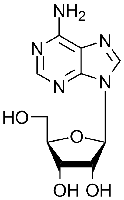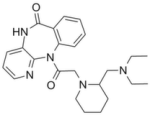G protein coupled receptors
G-protein-coupled receptors (also known as GPCRs, transmembrane receptors, or 7-TM receptors), are integral membrane proteins that contain seven membrane-spanning domains (helices). They are coupled to heterotrimeric G proteins on the intracellular side of the cell membrane. Ligand binding causes a conformational change in the GPCR, that is then transmitted to the G protein, activating a signal transduction pathway. Researchers can save up to 50% on GPCR receptor agonists, antagonists and allosteric modulators from Hello Bio - they are up to half the price of other suppliers.
View products: ACh Muscarinic | Adrenoceptors | Adenosine | Cannabinoid | Dopamine | GABAB | Histamine | Metabotropic Glutamate Receptors | Opioid | Peptide Receptors | Purinergic P2Y | Serotonin (5HT) | Neuroscience Research Tools
- Description:
Neurotoxin, widely used to produce the 6-OHDA Parkinson’s disease model
Purity:>98%
ABT 724 trihydrochloride (HB1883)
Description:Potent dopamine D4 receptor partial agonist
Purity:>99%
Acamprosate calcium (HB0099)
Description:GABA receptor agonist and glutamatergic modulator
Purity:>98%
Alprenolol hydrochloride (HB1734)
Description:Non-selective β-adrenoceptor antagonist. Also a 5-HT1A receptor antagonist.
Purity:>99%







![[Ala11,D-Leu15]-Orexin B](https://cdn.hellobio.com/media/catalog/product/cache/94284e7e2aa0585672abd2efa52d46dd/h/b/hb3407.png)


